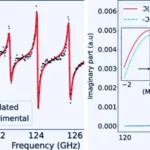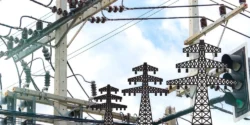Key Points
- Researchers propose using X-rays to deflect asteroids without physical impact.
- Computer simulations suggest that X-rays from a nuclear blast could deflect asteroids up to 4 kilometers wide.
- This method could be essential for deflecting large asteroids with short warning times.
- Further experiments with different asteroid materials, such as iron, are planned.
Researchers have discovered a new method to deflect asteroids headed toward Earth using X-rays without needing a spacecraft to impact the space rock physically. This innovative approach was detailed in Nature Physics. Scientists conducted lab experiments using X-rays to heat the surfaces of small, free-falling faux asteroids, causing vapor plumes that pushed the objects away.
Subsequent computer simulations confirmed that X-rays from a distant nuclear blast could potentially deflect asteroids up to 4 kilometers wide, roughly the length of the National Mall in Washington, D.C.
Nathan Moore, a physicist at Sandia National Laboratories in Albuquerque, emphasizes that this technique may be the only feasible option for deflecting large or fast-approaching asteroids. “The consensus in the planetary defense community is that X-rays from a nuclear device would be the only option in those scenarios,” Moore says, particularly when there’s limited warning time, sometimes as short as a year.
NASA’s successful 2022 mission, in which a spacecraft intentionally crashed into asteroid Dimorphos to alter its orbit, was a major milestone in planetary defense. However, such direct impacts only work when the asteroid is small, and there’s enough lead time to shift its trajectory. To address larger, more urgent threats, Moore and his team explored the deflective power of X-rays.
The team’s experiment took place in a vacuum chamber with a blueberry-sized mock asteroid made of quartz, which simulates the silica composition found in many asteroids. Using the world’s most powerful X-ray generator, they blasted the chamber for 6.6 nanoseconds. This pulse vaporized the quartz’s surface, creating a gas plume that propelled the mineral at about 250 kilometers per hour. Tests with fused silica yielded similar results.
To determine the effectiveness of this method for planetary defense, the researchers integrated their experimental findings into computer simulations. These simulations suggest that X-rays from a nuclear explosion occurring a few kilometers away could deflect an asteroid of similar materials. The team aims to extend this research by testing with other asteroid components, such as iron, as asteroids vary significantly in composition.
“This is just a starting point,” Moore says, acknowledging that different minerals might respond differently to the X-ray technique. The goal is to ensure that this method could be one of the tools available for planetary defense in case of a real asteroid threat.










